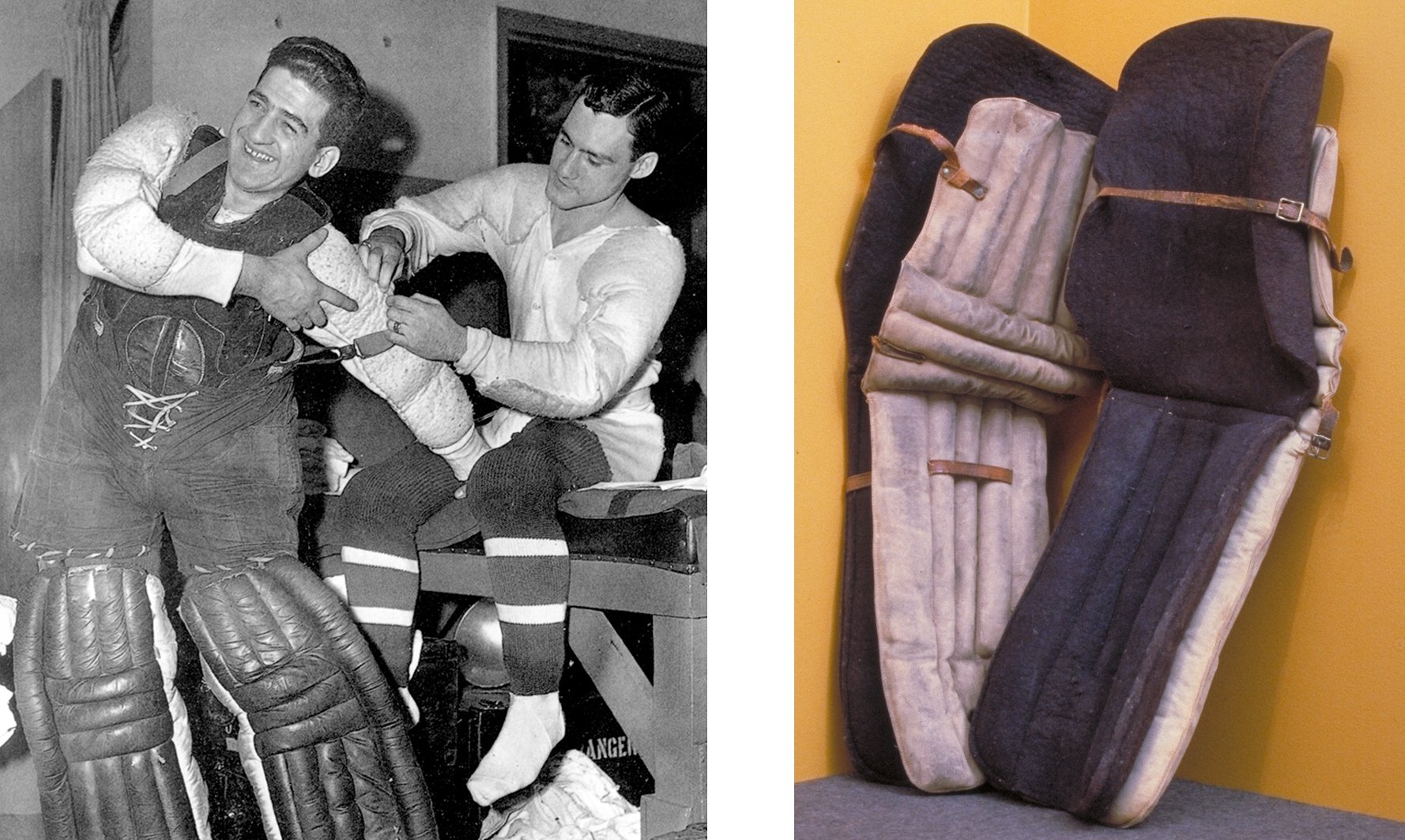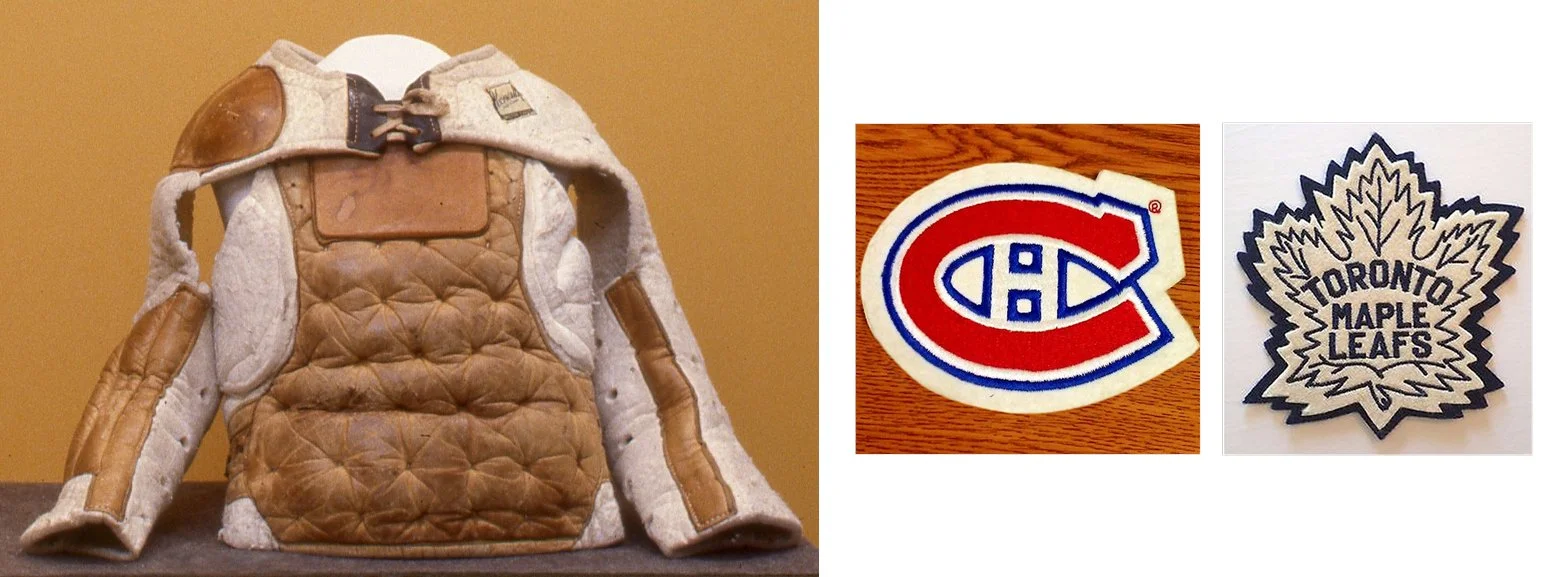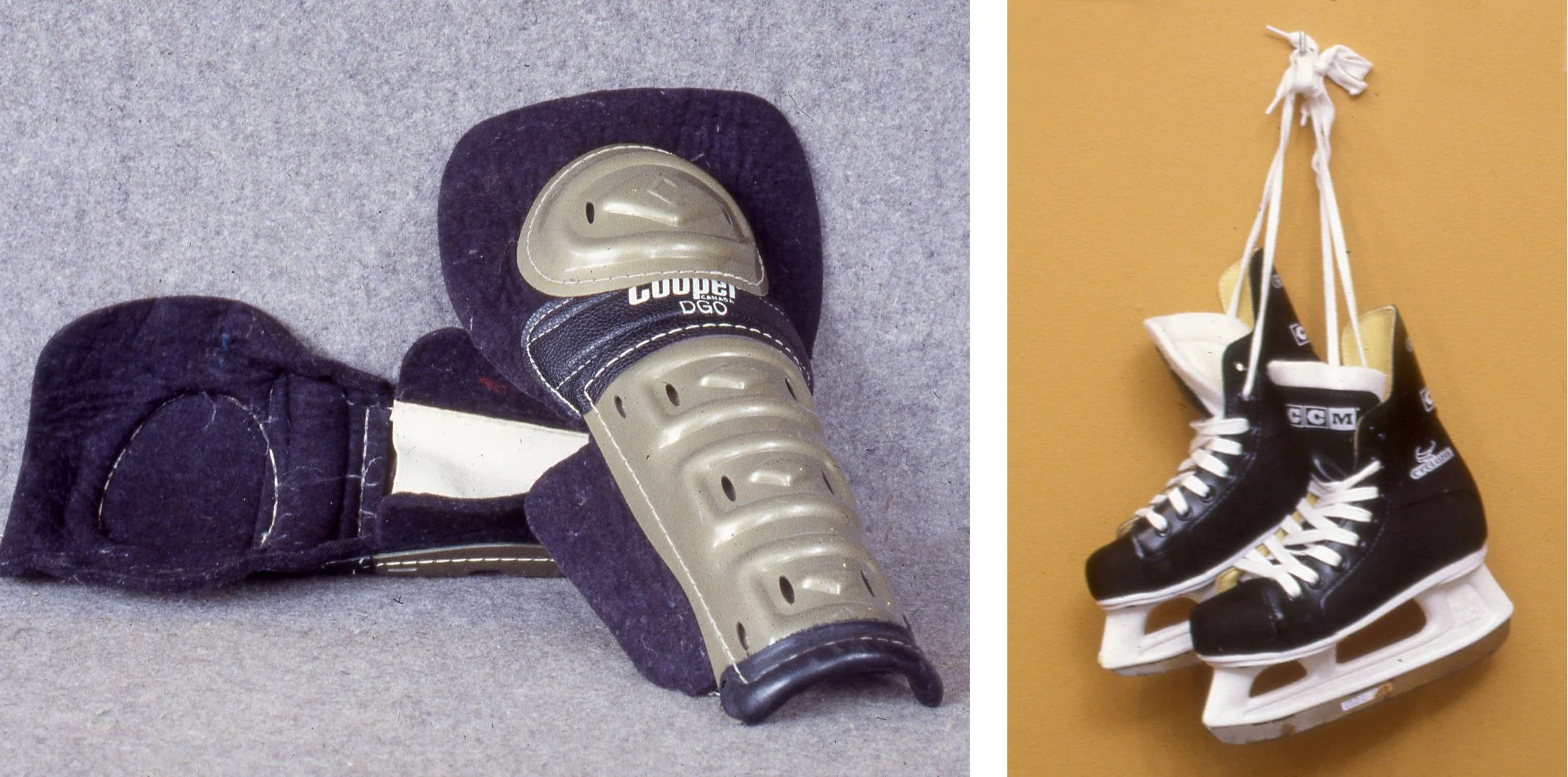Beaver Hats to Hockey Pads: A Social History of Felt in Canada: Part 12
The Golden Age of Hockey
Inspiration is found in a harness shop…
LEFT: Goaltender, Chuck Rayner gets assistance putting on his equipment. Rayner wears a felt and leather chest pad, and both players are wearing felt sewn onto their undershirts, 1945. photo from The Imperial Oil Turofsky Collection, Hockey Hall of Fame;
RIGHT: cricket pads with felt liners were the first goalie pads, 1920s
At the turn of the 20th century when hockey was becoming a professional sport, players wore little in the way of protective gear, but as contact became part of the game, it was essential. In those early days equipment was largely homemade, and displayed the ingenuity of each player.
According to popular belief, Cyclone Taylor, widely revered as hockey’s first superstar, was the first to add felt to his uniform. Inspired by felt-padded horse collars that he saw in a harness shop, he sewed felt onto his undershirt, over his shoulders and down his back. This was initially regarded as an affront to his masculinity, but others soon recognized his wisdom and demand grew. By the 1920s felt had become a common component of hockey equipment in the pants to protect the hips and kidneys, in shoulder pads, shin guards and knee pads.
LEFT: “Kenesky” shoulder pads, 1940s, Collection of the Hockey Hall of Fame. Emil “Pop” Kenesky, a harness-maker come hockey-equipment maker opened his shop in Hamilton in 1926 and became the primary maker of professional goalie gear through to the 1980s
RIGHT: felt crests, 1970s
By the 1960’s felt was largely replaced by synthetic materials. Plastics and resins dominated the market as was the case with much post-war manufacturing. But, team crests remained predominantly felt through the 70s and 80s, and although less visible, felt continues to be used in the tongues of skates. This padding has evolved from the days when hockey players placed two strips of felt beneath their skate laces, enabling them to tighten the fit of the boot to their feet.
LEFT: shin pads of plastic and felt, 1970s
RIGHT: CCM skates with felt tongue. 1990s
CCM and Bauer, the world’s most renowned brands in hockey equipment, were homegrown in Canada. By the 1970s, these company’s fell to corporate mergers, but their names reign supreme. Canada makes for good marketing where hockey is concerned. Bauer became part of Nike in 1994, and was rebranded Nike Bauer in 2006. This was the first time the American conglomerate used a partner brand on any product. Bauer was sold by Nike in 2008 and has since passed from parent company to parent company all the while retaining the recognizable name.
CCM was one of many companies ultimately bought by Reebok in 2004. Reebok retired all but the CCM brand, but was acquired by Adidas in 2005. Now CCM is the only name brand used by the company on its hockey equipment. In 2017, Adidas sold CCM, and it returned to Canada in the hands of Birch Hill Equity Partners. With 15 partner companies, Birch Hill represents one of Canada’s largest corporate entities. KW


